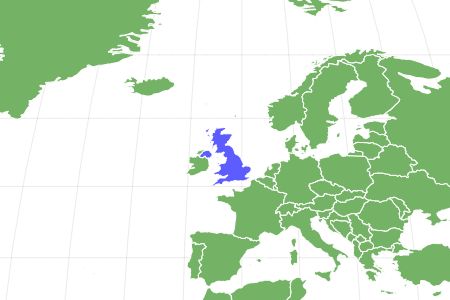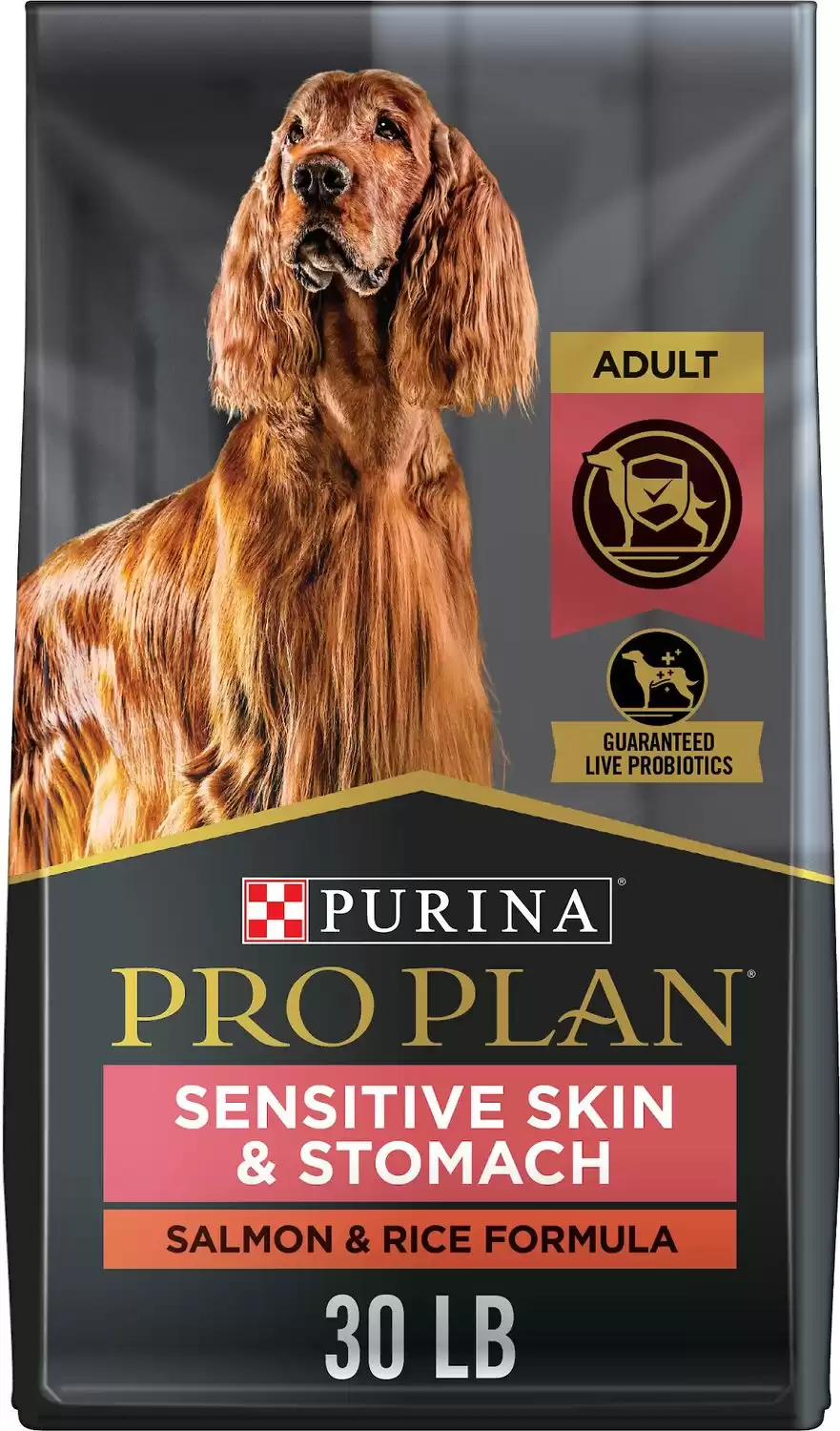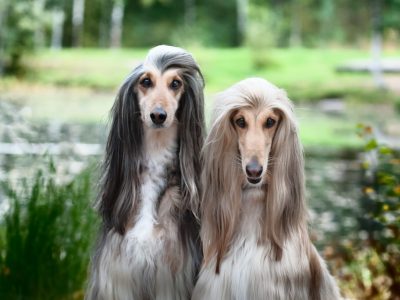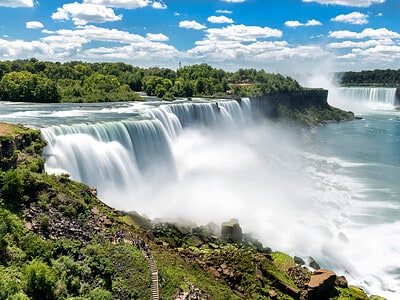Curly Coated Retriever
Canis lupus
Curly coated retrievers are excellent swimmers.
Advertisement
Curly Coated Retriever Scientific Classification
- Kingdom
- Animalia
- Phylum
- Chordata
- Class
- Mammalia
- Order
- Carnivora
- Family
- Canidae
- Genus
- Canis
- Scientific Name
- Canis lupus
Read our Complete Guide to Classification of Animals.
Curly Coated Retriever Conservation Status
Curly Coated Retriever Facts
- Fun Fact
- Curly coated retrievers are excellent swimmers.
- Diet
- Omnivore
- Common Name
- Curly Coated Retriever
Curly Coated Retriever as a Pet:
- General Health
- Energy Level
- Shedability
- Trainability
- Intelligence
- Tendency to Chew
- Size
- Family and kid friendliness
- Yappiness / Barking
- Moderate
- Separation Anxiety
- High
- Preferred Temperature
- Average climate
- Exercise Needs
- Moderate
- Friendly With Other Dogs
- High
- Pure bred cost to own
- $1200
- Dog group
- Sporting
- Male weight
- 60-95 lbs
- Female weight
- 60-95 lbs
This post may contain affiliate links to our partners like Chewy, Amazon, and others. Purchasing through these helps us further the A-Z Animals mission to educate about the world's species.
View all of the Curly Coated Retriever images!
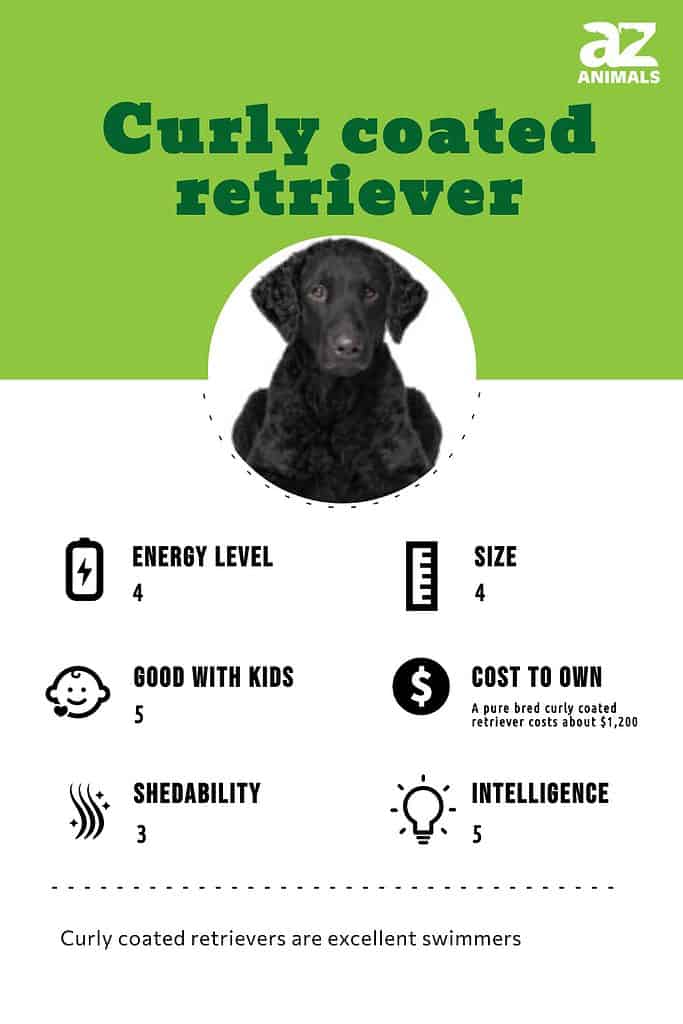
Curly Coated Retrievers have curls that are waterproof. Coincidentally, they like to swim!
The Curly Coated Retriever sometimes referred to as a Curly is a member of the sporting group. It’s notable for the black or liver (dark brown) curls all over its body with the exception of its face and front legs. This intelligent dog is good with kids, but is known as one of the few retrievers that can be shy around unfamiliar people.
See all of our expert product reviews.
This breed came about in 19th century England. It’s thought to be a mix between the English Water Spaniel and the Retrieving Setter. Both of those breeds are extinct now. Curly Coated Retrievers are also related to poodles. Aside from the curly fur, these dogs are elegant and smart like poodles. This dog was popular with hunters in Britain who wanted a dog to retrieve ducks and other dead animals without biting into them. Curly Coated Retrievers are known to have a ‘tender’ mouth.
These affectionate dogs enjoy being indoors with their family members as much as running through a field looking for new scents.
3 Pros and Cons of Owning a Curly Coated Retriever
| Pros! | Cons! |
|---|---|
| Easy to obedience train These dogs are intelligent making them good candidates for successful obedience training. | A bit shy These dogs take a little longer to warm up to unfamiliar people than other types of retrievers. |
| Loyal family dogs They are loyal to the members of a household and enjoy relaxing on the sofa with family. | Seasonal shedding Though these dogs shed very little most of the time, they have an increased amount of shedding every six months. |
| Good with other dogs If there are other dogs in a family, a socialized Curly Coated Retriever is going to get along well with them. | Special grooming attention This dog needs special grooming with an undercoat brush to loosen dead hair. Its curls need to be combed instead of brushed to reduce frizz. |
Evolution and Origins
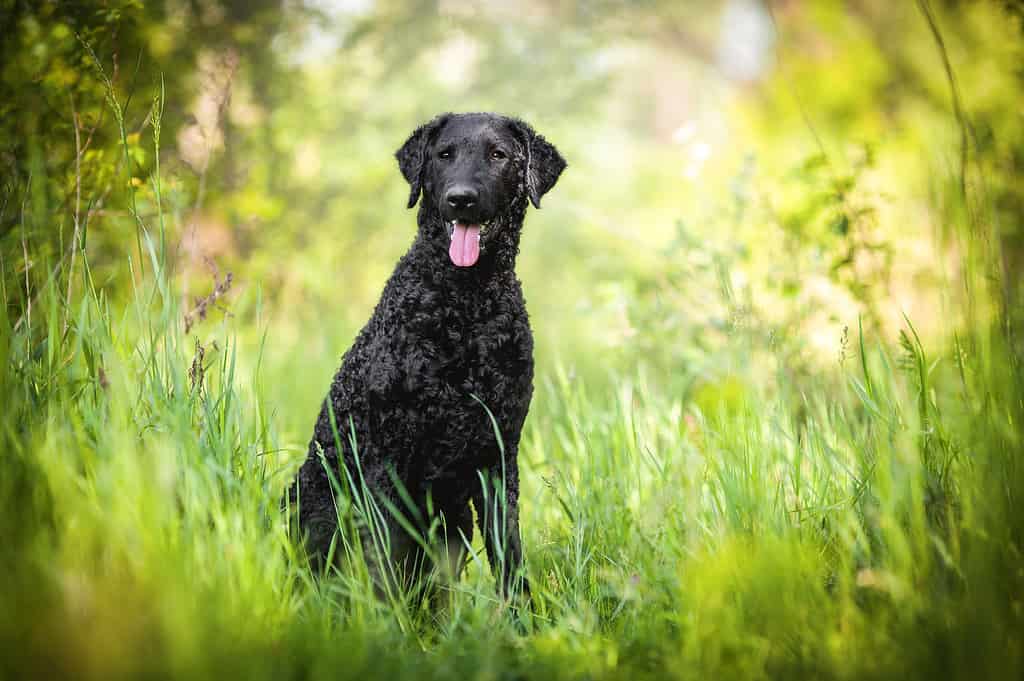
Curly coated retrievers are believed to be descended from English water spaniels, Irish water spaniels, St, John’s dogs, and retrieving setters
©nik174/Shutterstock.com
It has the elegance of a poodle and its curls too, and yet a peek into the hotly disputed origins of the curly coated retriever hints at a few more forebears. Experts assert that in its veins runs the blood of the web-footed Irish water spaniel, the now-extinct English water spaniel, St. John’s dog, and the retrieving setter.
Health and Entertainment for your Curly Coated Retriever
See all of our expert product reviews.
When did it first come on the scene? In 19th century England, where it soon become a star participant at the nation’s shows. Its popularity soon made it the hunting companion of choice in Australia and New Zealand, a position it still maintains.
However, elsewhere, it has had to share some of that shine with Labradors and Golden retrievers which have also pawed their way into the spotlight.
Size and Weight
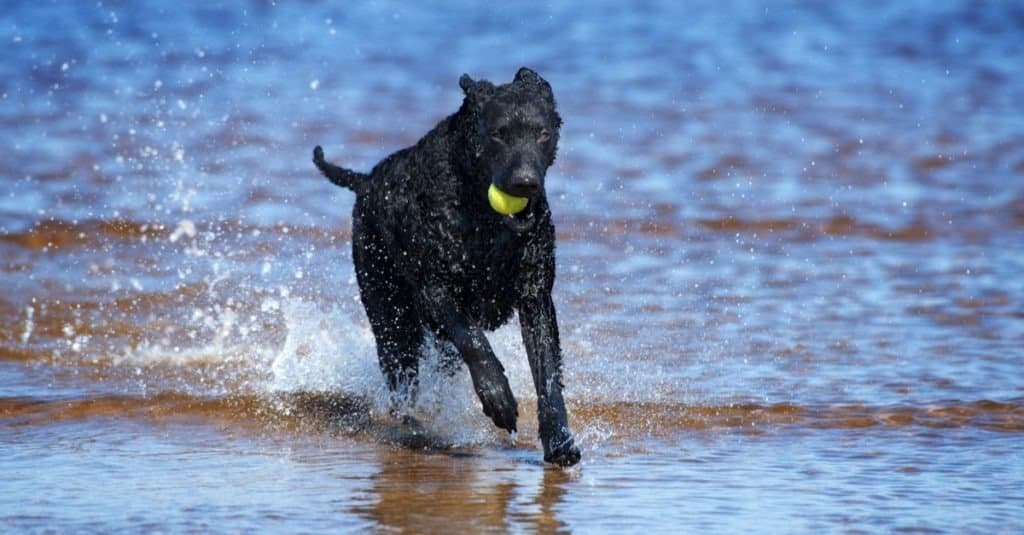
Curly coated retrievers reach their full size at the age of two
©otsphoto/Shutterstock.com
Curly coated retrievers have short, curly hair without an undercoat. Males grow to be 27 inches tall at the shoulder while females grow to be 25 inches tall. At 7 weeks old Curly Coated Retriever puppies weigh around 7 pounds. These dogs are fully grown at around 2 years though they’ll still have puppy-like behavior until they are about 3.
| Height (male) | 27 inches tall |
| Height (female) | 25 inches tall |
| Weight (male) | 95 pounds, fully grown |
| Weight (female) | 95 pounds, fully grown |
Learn more about the best big dog breeds here.
Common Health Issues
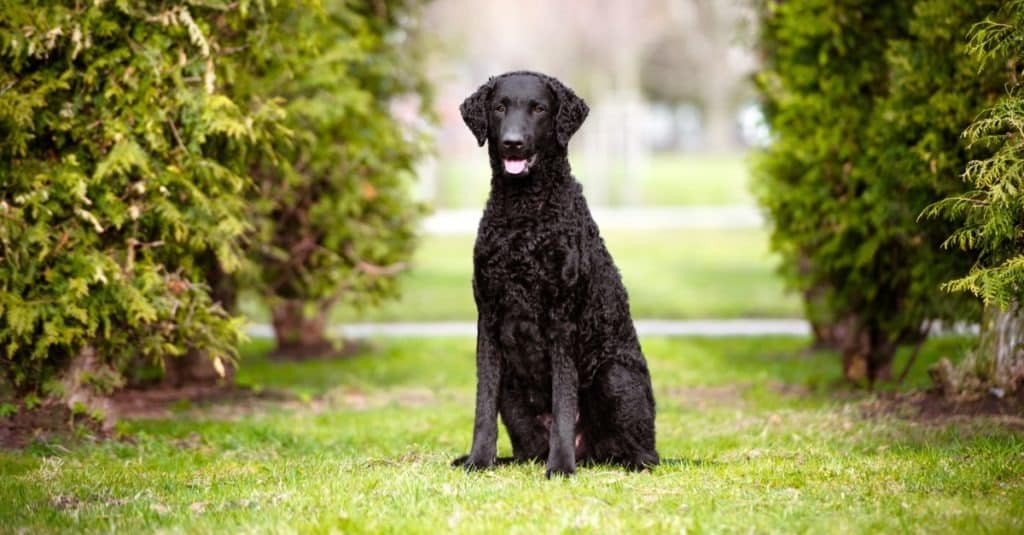
Curly Coated Retrievers may suffer from follicular dysplasia
©otsphoto/Shutterstock.com
Curly Coated Retrievers are more prone to some health issues than others. One of those issues is called follicular dysplasia. Follicular dysplasia is genetic and causes bald spots in various areas of the dog’s coat. Gentle grooming, special shampoos, or medications can sometimes help with this issue.
Another common health issue is hip dysplasia. This is common in retrievers and other large dogs. Hip dysplasia is when the dog’s hip joint is out of alignment. It can cause limping and problems with range of movement. Sometimes surgery is required for this issue depending on how severe it is.
The third common health issue of Curly Coated Retrievers is cataracts. Cataracts show up as a cloudiness in the eye or eyes of this dog. This is a condition that occurs in older dogs. Maintaining a dog’s eye health with the proper diet can help to prevent this condition.
The most common health issues of this breed include:
- Follicular dysplasia
- Hip dysplasia
- Cataracts
Temperament
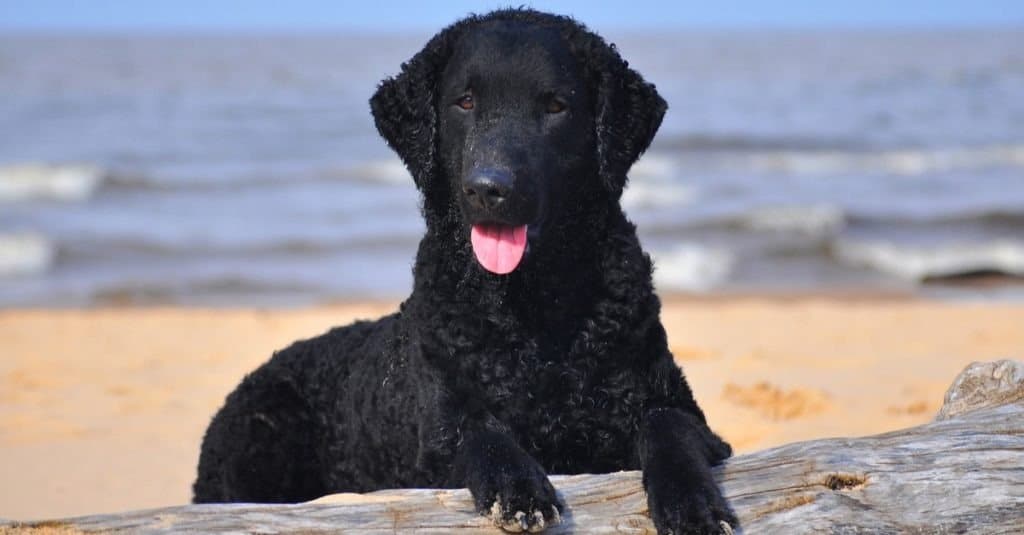
Curly coated retrievers are energetic, intelligent, and affectionate, although they may take a while to warm up to strangers
©budur.foto/Shutterstock.com
Intelligence is one of the most notable traits of this dog breed. This means they are quick to pick up lessons during obedience training. Like most retrievers, Curlies have a friendly temperament. However, it may take this breed a little longer to cozy up to people outside the family.
This is a high-energy dog! It loves to run, jump, and play chase. Consequently, it needs a lot of space to move around in. If this dog doesn’t receive exercise every day, it can develop destructive behavior such as chewing items in the household.
A Curly Coated Retriever is a playful, loyal addition to a household with or without children.
How to Take Care of a Curly Coated Retriever
Learning about the dietary, exercise, and healthcare needs of a pet can help an owner to provide the best possible care. Whether someone gets a Curly Coated Retriever puppy or adult dog, it’s beneficial to look at this breed’s unique needs when planning its daily care.
The Best Dog Food for Curly Coated Retrievers
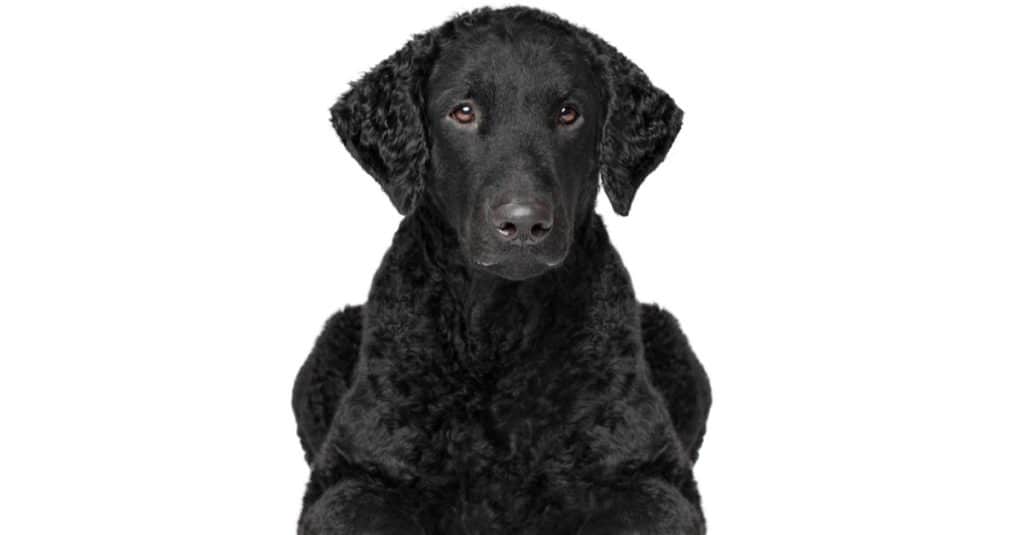
Curly Coated Retrievers need a diet which is rich in omega-3 fatty acids to keep their coats in excellent condition
©Jagodka/Shutterstock.com
Not surprisingly, Curly Coated Retriever puppies and adult dogs have different nutritional requirements. Look at some of the nutrients needed to maintain the health of this breed of dog at different ages.
Puppy food: High-quality puppy food for this breed should contain around 30 percent protein. Protein supports the growth of strong muscles and supplies energy to these active puppies. Omega 3 fatty acids support healthy coat growth. Fatty acids are especially important for this breed because they are prone to follicular dysplasia. A limited amount of fat in a puppy’s diet supplies energy without adding excess weight. Calcium contributes to strong bones and teeth while Vitamin A supports eye health. Fiber helps with proper digestion.
Adult dog food: A high-quality dog food designed for Curly Coated Retriever adult dogs can help them to avoid obesity. Unfortunately, excess weight can increase the likelihood of hip dysplasia. Protein in the form of chicken, eggs, and pork as well as spinach and other veggies contributes to keeping muscles and bones strong in an adult dog. Vitamin A supports eye health which can help to prevent cataracts. Also, Vitamin A is good for a dog’s skin. A limited amount of fat supplies energy and Vitamin E is an antioxidant.
A-Z Animals trusts that the best dog food for Curly Coated Retrievers is Purina Pro Plan Sensitive Skin & Stomach, High Protein Dry Dog Food.
Full of salmon, the fish ingredients provide naturally occurring glucosamine for hip dysplasia prevention. A balance of calcium and phosphorus adds even more bone and joint nourishment, while vitamin A cares for the eyes. Vitamin E and omega-6 fatty acids make for smooth skin and a healthy coat.
Check Chewy and Amazon for this product.
- Salmon and rice recipe for sensitive stomachs and and skin
- Live probiotics for optimum digestive health
- Sunflower oil promotes healthy skin and coat
Maintenance and Grooming
Some claim that dogs with curly hair, including this breed, are hypoallergenic. This isn’t the case. A hypoallergenic dog sheds very little or not at all.
How much do Curly Coated Retrievers shed? They shed a normal amount while shedding an increased amount twice per year (every 6 months). This breed doesn’t have an undercoat.
When the dog is experiencing this increased shedding, many owners use a grooming tool called an undercoat rake to loosen dead hair. Look for an undercoat rake with plastic, rounded bristles that won’t hurt the dog’s skin. Weekly grooming can be done with a simple comb. Avoid using a brush because they tend to make this dog’s curls look frizzy!
Bald spots can be a sign of a common health issue with this breed called follicular dysplasia.
This dog should only be bathed when its coat becomes dusty or begins to take on an odor.
Training
Curly Coated Retrievers are known for their intelligence. This is a trait that works in an owner’s favor during obedience training. However, they can be stubborn dogs. So, it’s effective to use treats and praise during training sessions.
Exercise
Getting 30 to 60 minutes of exercise per day plays an important part in keeping this dog in good health. They are high-energy canines and like to run, jump, chase, and play fetch. They like to explore the woods, fields, and other outdoor areas.
This dog is not an ideal choice for apartment dwellers. It needs lots of space and is better suited for a family with a large yard or even one that lives on a farm.
Puppies
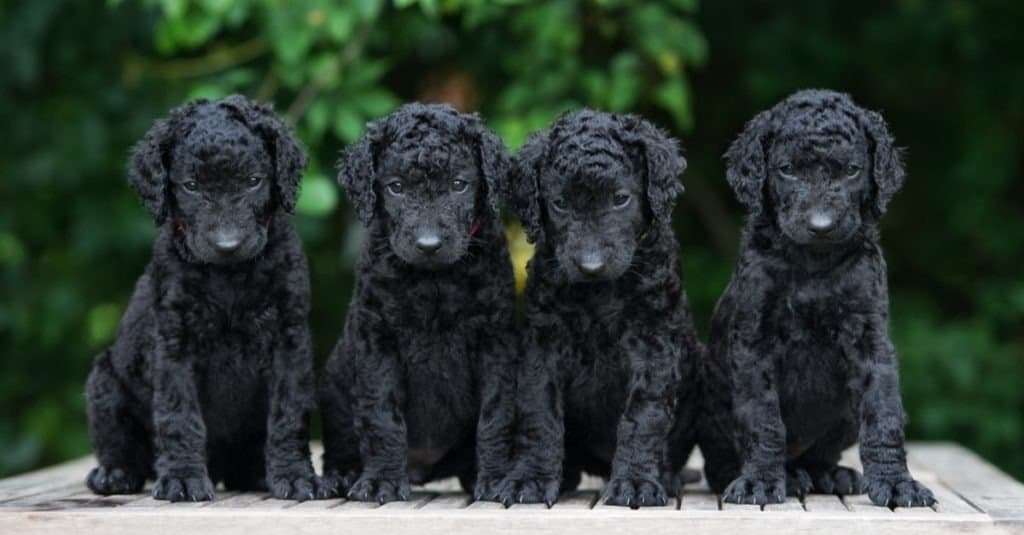
Curly Coated Retrievers must be socialized as puppies and given plenty of room to play and explore
©otsphoto/Shutterstock.com
When raising a Curly Coated Retriever puppy, it’s important to socialize it by allowing it plenty of time around people and other pets. That way, as the dog grows, it will be more at ease in the household. Also, these high energy puppies need plenty of space to stretch their legs!
Children
Curly Coated Retrievers that are socialized from puppyhood are good with kids. When these dogs get very excited they may start running around at full speed. If so, it’s best to monitor small children so they aren’t inadvertently knocked down.
Dogs Similar to Curly Coated Retrievers
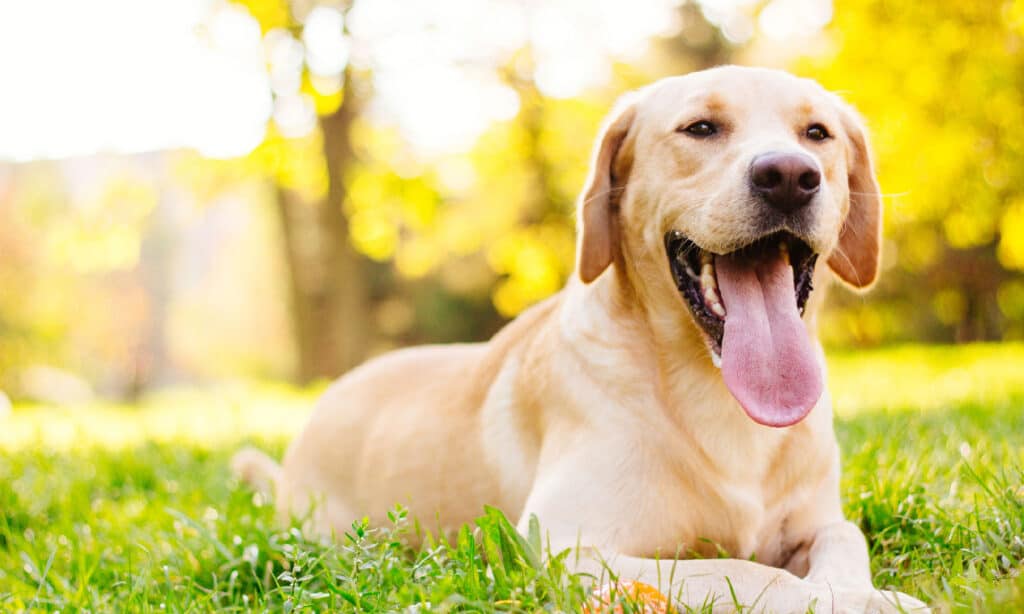
Labrador retrievers are
©iStock.com/sanjagrujic
Dogs that are similar to Curly Coated Retrievers include the Labrador Retriever, poodle, and the American Water Spaniel.
- Labrador Retriever – Curly Coated Retrievers and Labrador Retrievers are similar in size (height) and weight. They are both in the sporting group, but Labradors are a little more social and friendlier than Curlies.
- Poodle – Poodles and Curly Coated Retrievers share the same type of coat. They are both very intelligent and have a loyal temperament. Poodles are smaller in size than Curly Coated Retrievers.
- American Water Spaniel – American Water Spaniels and Curly Coated Retrievers are both intelligent and alert. They both have a curliness to their coat. An American Water Spaniel has a sweet temperament whereas a Curly Coated Retriever has to have a little time to warm up to unfamiliar people.
Popular Names for Curly Coated Retrievers
Popular names for Curly Coated Retrievers include:
- Daisy
- Bella
- Ginger
- Felix
- Ben
- Beau
- Teddy
- Murphy
Curly Coated Retriever FAQs (Frequently Asked Questions)
Are Curly Coated Retrievers herbivores, carnivores, or omnivores?
Curly Coated Retrievers are Omnivores, meaning they eat both plants and other animals.
What Kingdom do Curly Coated Retrievers belong to?
Curly Coated Retrievers belong to the Kingdom Animalia.
What class do Curly Coated Retrievers belong to?
Curly Coated Retrievers belong to the class Mammalia.
What phylum to Curly Coated Retrievers belong to?
Curly Coated Retrievers belong to the phylum Chordata.
What family do Curly Coated Retrievers belong to?
Curly Coated Retrievers belong to the family Canidae.
What order do Curly Coated Retrievers belong to?
Curly Coated Retrievers belong to the order Carnivora.
What type of covering do Curly Coated Retrievers have?
Curly Coated Retrievers are covered in hair.
What genus do Curly Coated Retrievers belong to?
Curly Coated Retrievers belong to the genus Canis.
What is an interesting fact about Curly Coated Retrievers?
The Curly Coated Retriever is a lively and fun-loving breed!
What is the scientific name for the Curly Coated Retriever?
The scientific name for the Curly Coated Retriever is Canis lupus.
What is the lifespan of a Curly Coated Retriever?
The lifespan of a Curly Coated Retriever goes up to 12 years. But, of course, some of these dogs have been known to live longer than 12 years.
How much do Curly Coated Retrievers cost to own?
The initial cost of a Curly Coated Retriever is around $1200. The veterinary costs for this dog range from $200 to $300 per year.
The price range for dog food goes from $50 to $100. The total price of the food depends on the brand and the amount purchased.
Are Curly Coated Retrievers good with kids?
Yes. Curly Coated Retrievers that are properly socialized are good with kids.
Do Curly Coated Retrievers shed a lot?
No. They shed a little more than average every six months, but this is normal seasonal shedding. Some people believe this breed is hypoallergenic, but this is not true.
Do Curly Coated Retrievers smell?
These dogs may start to take on an odor if they don’t receive a bath when needed. However, that’s true with any dog!
What does a Curly Coated Retriever look like?
A Curly Coated Retriever has tight curls all over its body except on its face and front legs. This dog’s face and front legs are covered in straight hair. Their coat is either black or liver (dark brown). Males can grow up to 27 inches tall at the shoulder while females grow to be 25 inches tall. These dogs can weigh anywhere from 60 to 95 pounds.
Thank you for reading! Have some feedback for us? Contact the AZ Animals editorial team.
Sources
- American Kennel Club, Available here: https://www.akc.org/dog-breeds/curly-coated-retriever/
- United Kennel Club, Available here: https://www.ukcdogs.com/curly-coated-retriever

